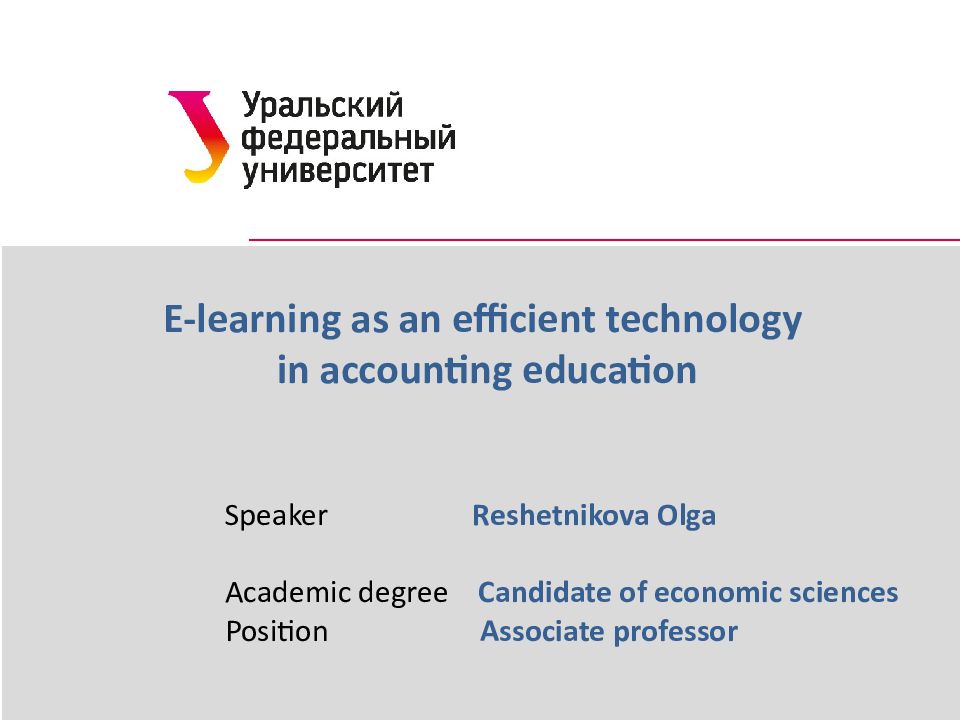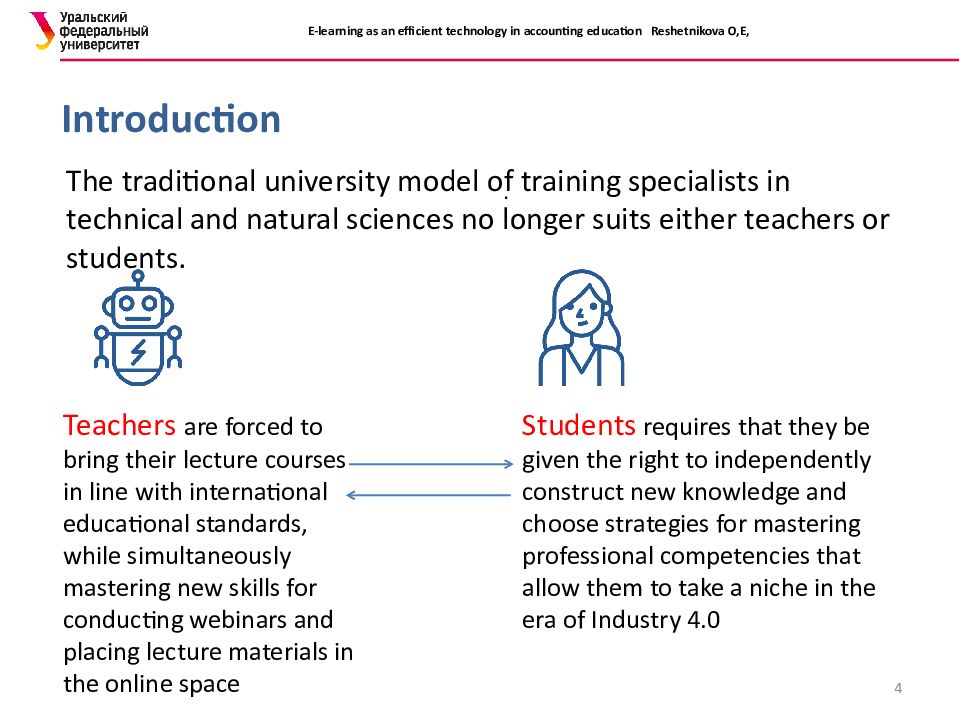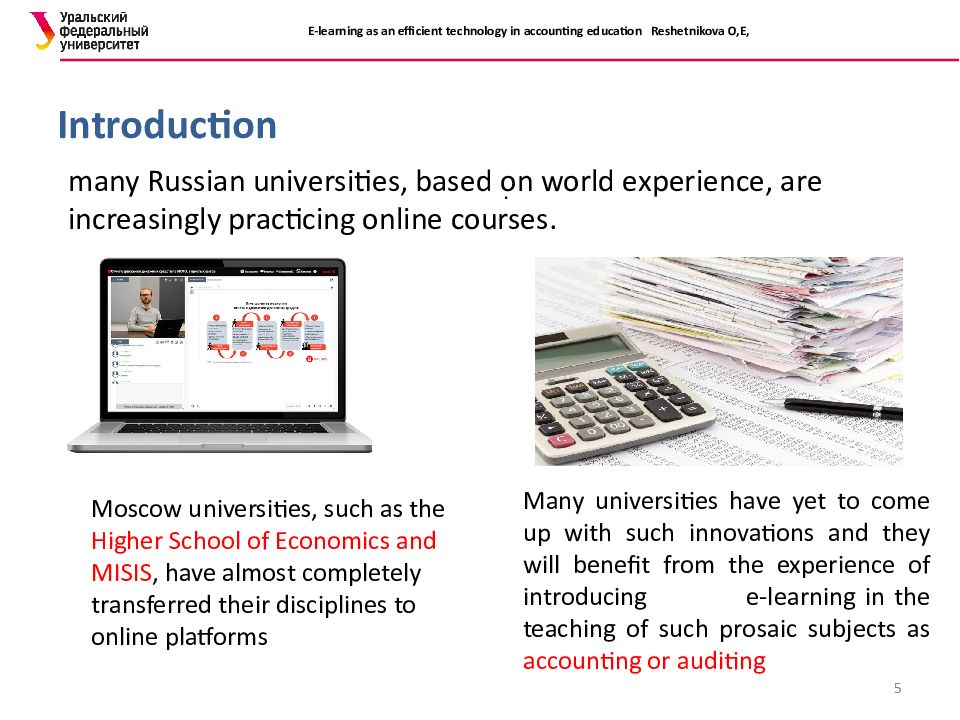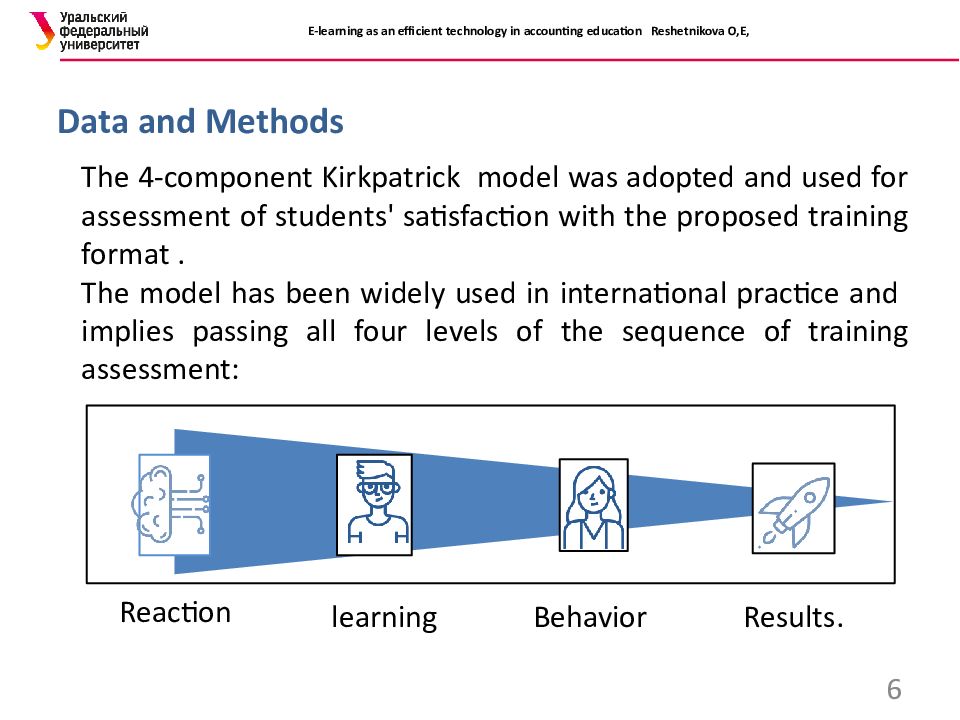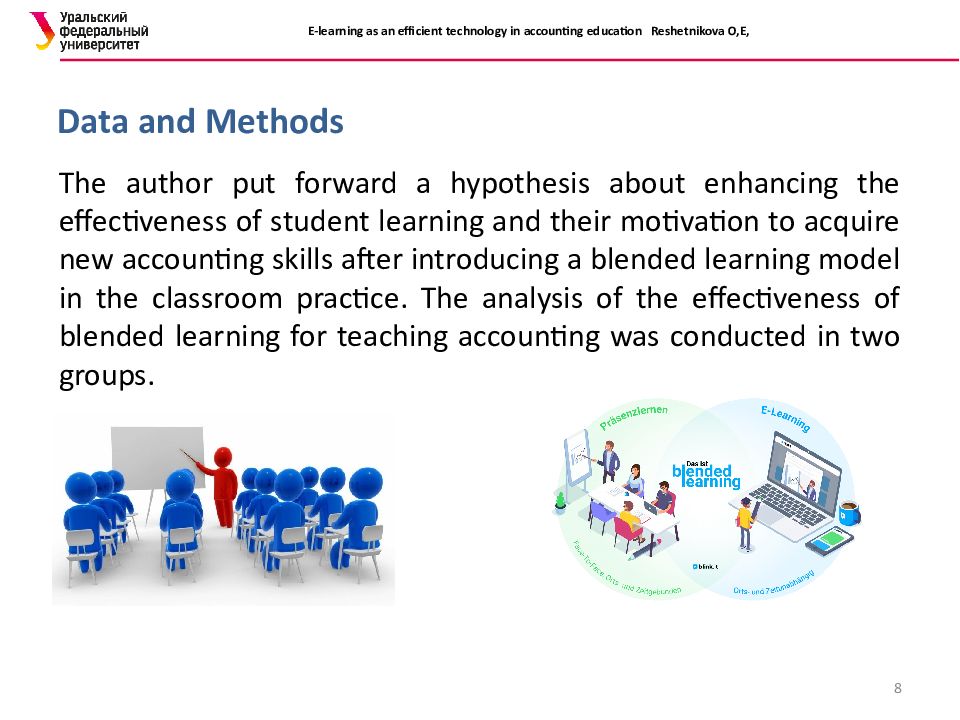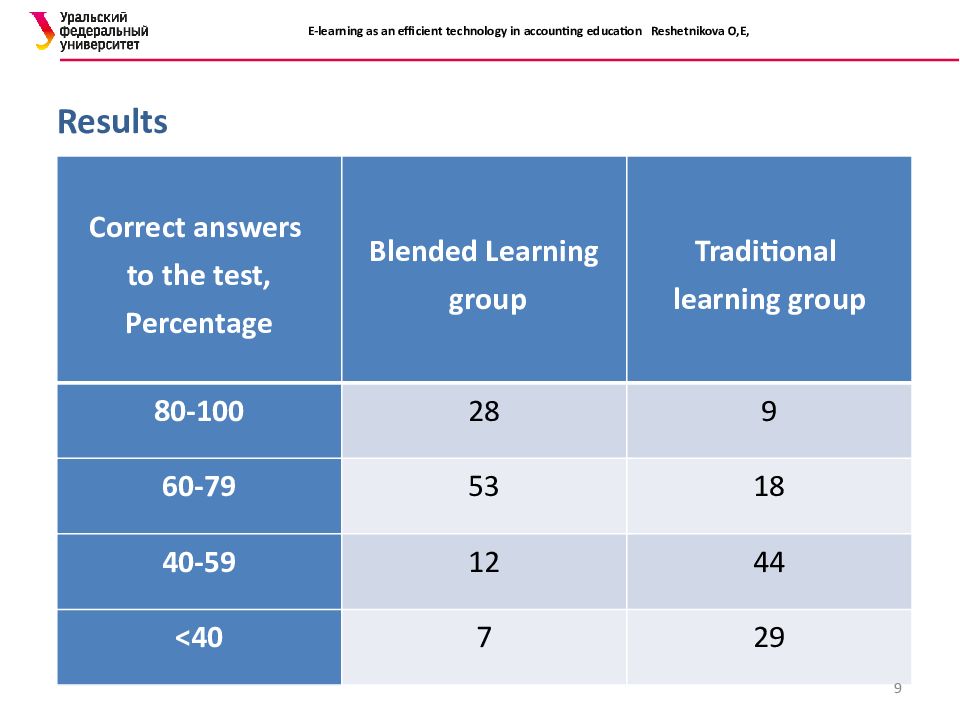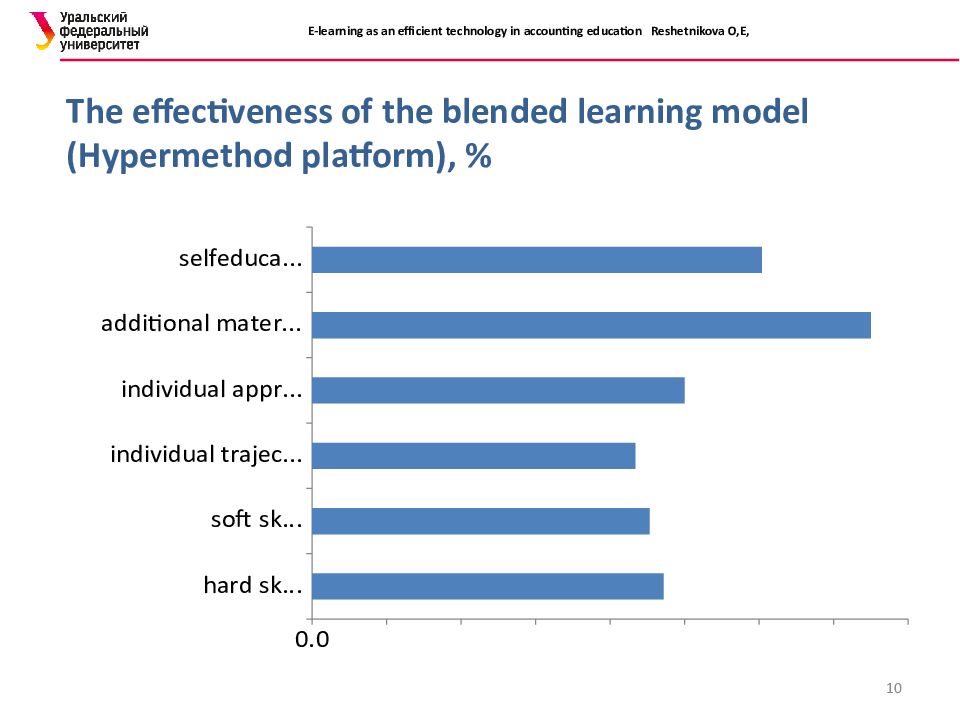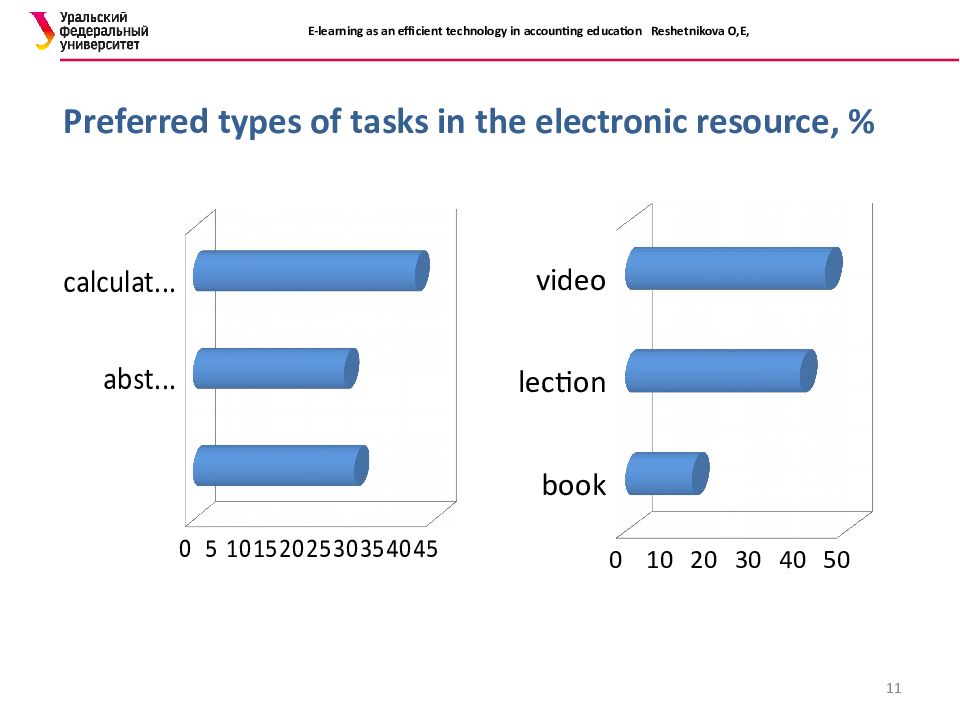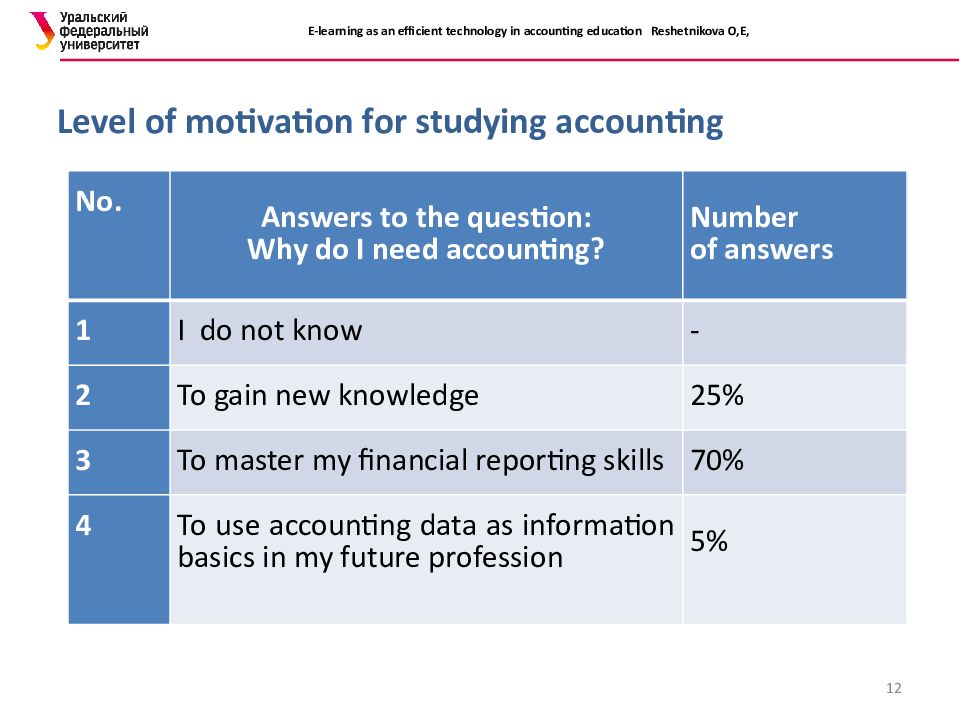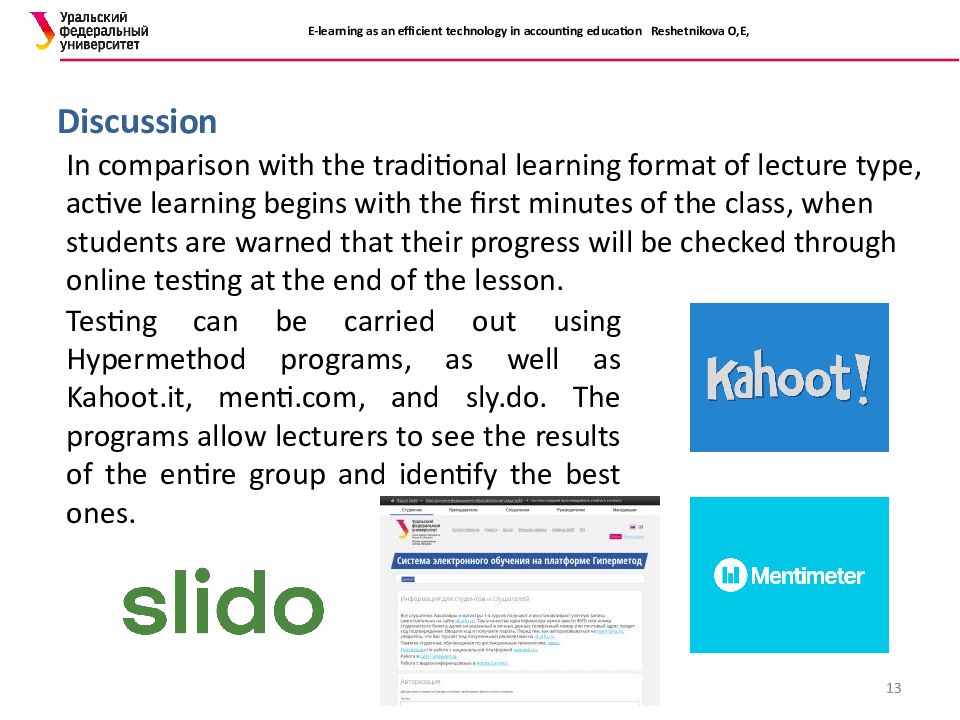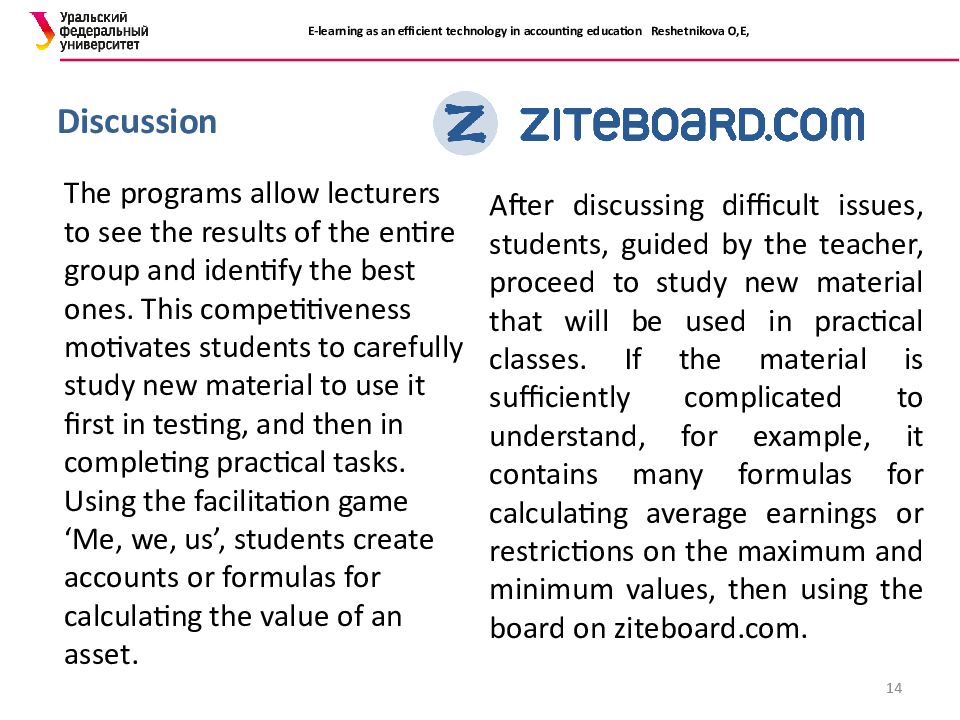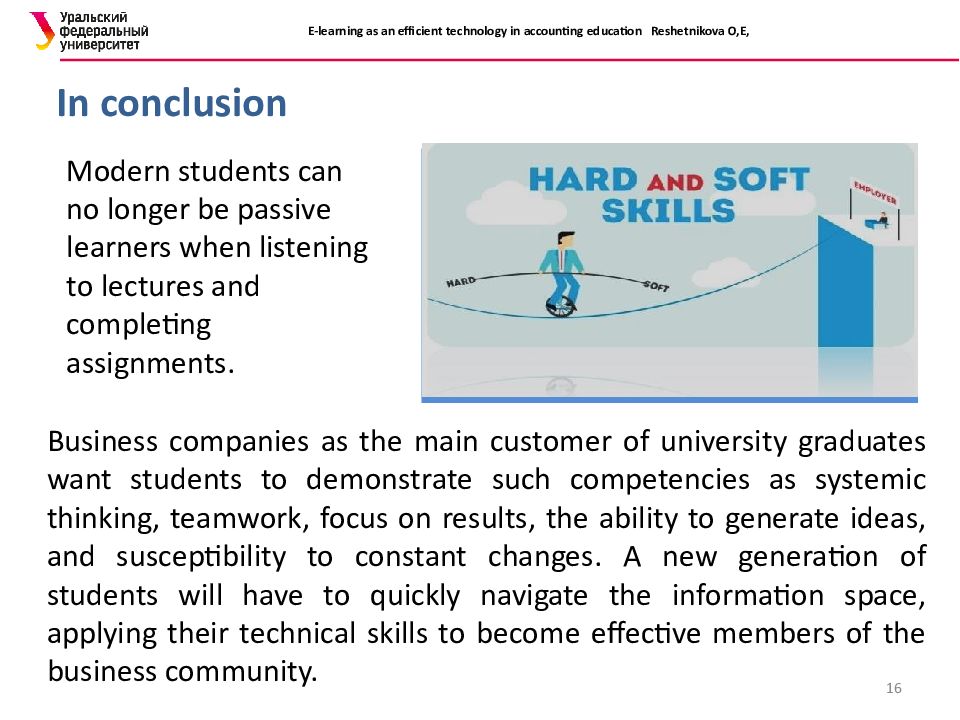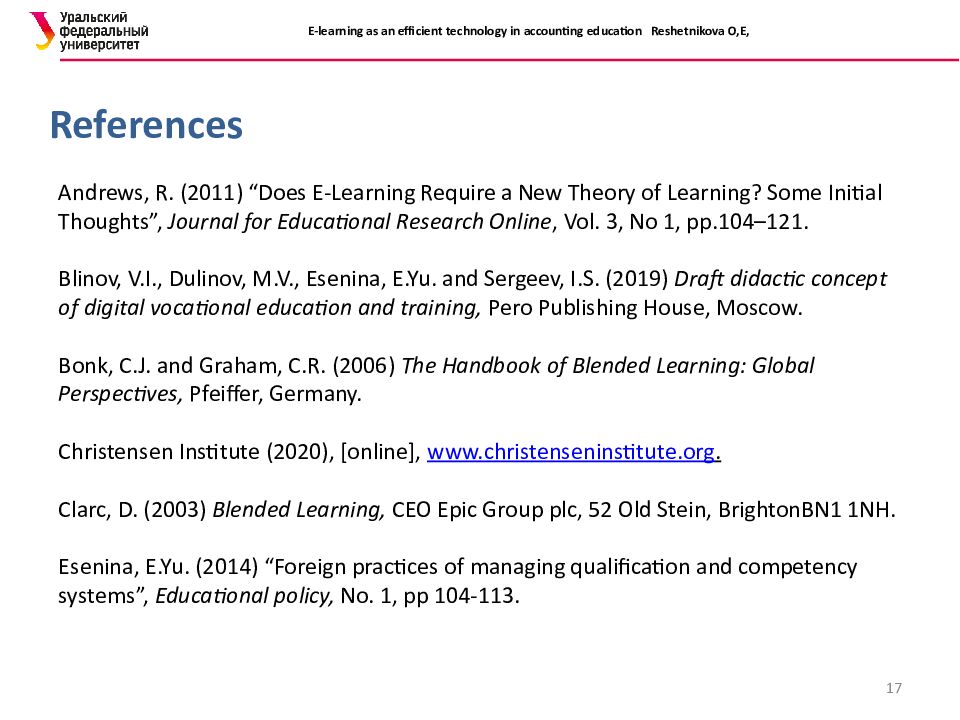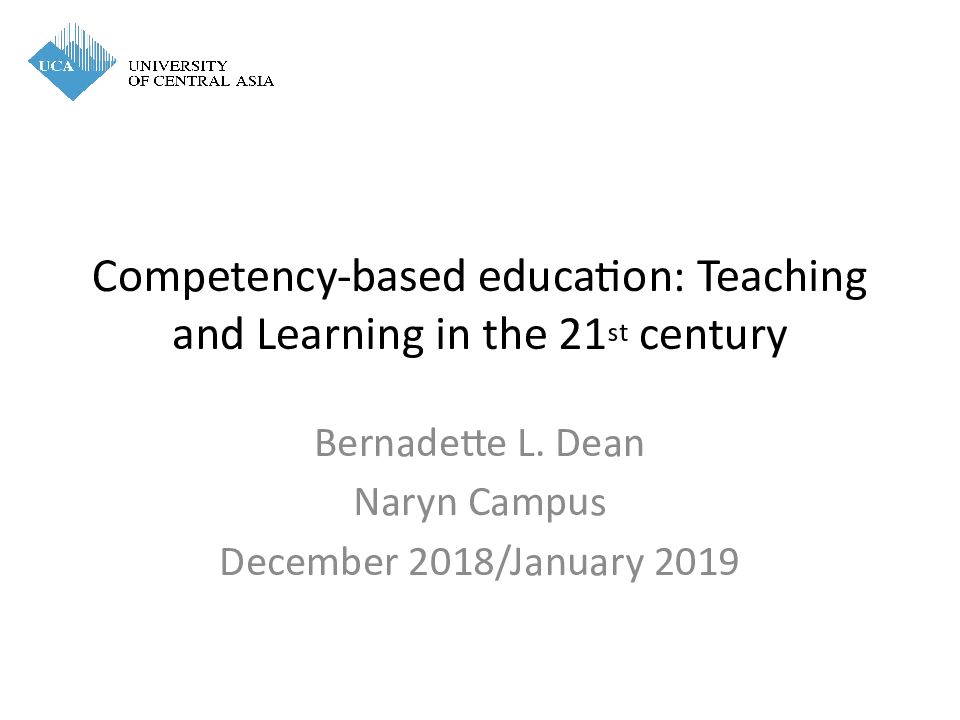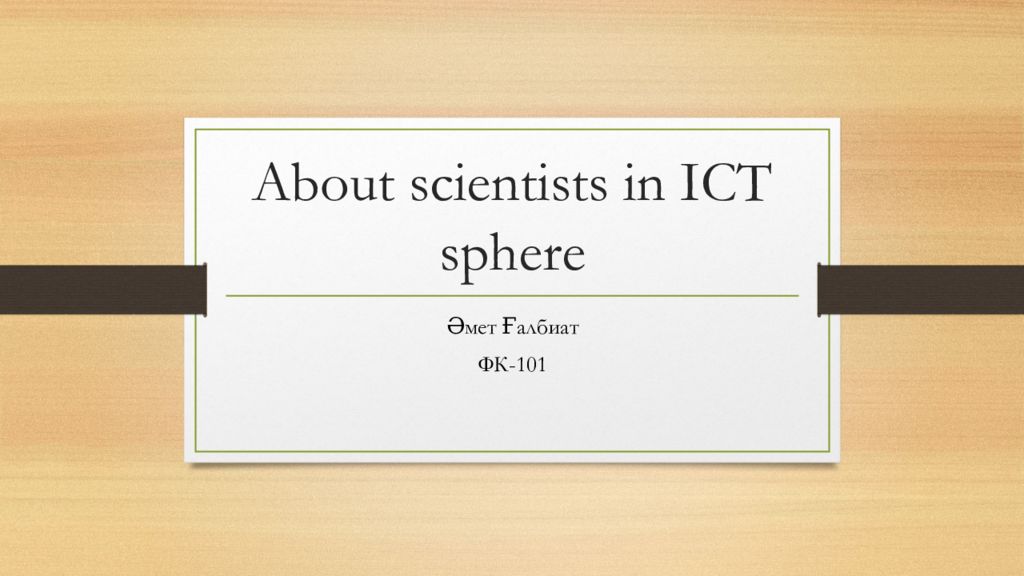Первый слайд презентации
E-learning as an efficient technology in accounting education Speaker Reshetnikova Olga Academic degree Candidate of economic sciences Position Associate professor
Слайд 2
2 Reshetnikova OLGA Candidate of Economic Sciences, Associate Professor of the Accounting, Analysis and Auditing Department of the Economics and management Institute, Ural Federal University, Russia Conducts a general lecture course and practical classes in the disciplines "Accounting", "Economic analysis". E-learning as an efficient technology in accounting education Reshetnikova O,E,
Слайд 3
E-learning as an efficient technology in accounting education Reshetnikova O,E, Introduction . Blended Learning : 3 the combination of different teaching methods in face-to-face learning with online systems; a solution that combines several modes of acquiring knowledge, for example, collaboration projects and Web-based courses; the use, to one degree or another, of e-learning and full-time learning; working with digitized text students are freer, because the digital text is easy to change or use in other practices.
Слайд 4
E-learning as an efficient technology in accounting education Reshetnikova O,E, Introduction . The traditional university model of training specialists in technical and natural sciences no longer suits either teachers or students. Teachers are forced to bring their lecture courses in line with international educational standards, while simultaneously mastering new skills for conducting webinars and placing lecture materials in the online space Students requires that they be given the right to independently construct new knowledge and choose strategies for mastering professional competencies that allow them to take a niche in the era of Industry 4.0 4
Слайд 5
E-learning as an efficient technology in accounting education Reshetnikova O,E, Introduction . Many universities have yet to come up with such innovations and they will benefit from the experience of introducing e-learning in the teaching of such prosaic subjects as accounting or auditing 5 many Russian universities, based on world experience, are increasingly practicing online courses. Moscow universities, such as the Higher School of Economics and MISIS, have almost completely transferred their disciplines to online platforms
Слайд 6
E-learning as an efficient technology in accounting education Reshetnikova O,E, Data and Methods . The 4-component Kirkpatrick model was adopted and used for assessment of students' satisfaction with the proposed training format. The model has been widely used in international practice and implies passing all four levels of the sequence of training assessment : reaction, Reaction learning Behavior Results. 6
Слайд 7
E-learning as an efficient technology in accounting education Reshetnikova O,E, Data and Methods The survey on the preferred way of studying accounting was conducted among 176 students (95 women and 81 men) at the Ural Federal University. The questions were developed using the Moodle platform. Then, another survey was conducted using Google forms to determine the effectiveness of the blended learning model. The respondents (53 people, 30 women and 23 men) were selected by a representative sample among the students who were taking a course in accounting in the blended learning group. They were interviewed immediately after the standardized formative test evaluating the degree of mastering a lecture topic. 7
Слайд 8
E-learning as an efficient technology in accounting education Reshetnikova O,E, Data and Methods 8 The author put forward a hypothesis about enhancing the effectiveness of student learning and their motivation to acquire new accounting skills after introducing a blended learning model in the classroom practice. The analysis of the effectiveness of blended learning for teaching accounting was conducted in two groups.
Слайд 9
E-learning as an efficient technology in accounting education Reshetnikova O,E, Results Correct answers to the test, Percentage Blended Learning group Traditional learning group 80-100 28 9 60-79 53 18 40-59 12 44 <40 7 29 9
Слайд 10
E-learning as an efficient technology in accounting education Reshetnikova O,E, 10 The effectiveness of the blended learning model ( Hypermethod platform), %
Слайд 11
E-learning as an efficient technology in accounting education Reshetnikova O,E, Preferred types of tasks in the electronic resource, % 11
Слайд 12
E-learning as an efficient technology in accounting education Reshetnikova O,E, Level of motivation for studying accounting 12 No. Answers to the question : Why do I need accounting? Number of answers 1 I do not know - 2 To gain new knowledge 25 % 3 To master my financial reporting skills 70 % 4 To use accounting data as information basics in my future profession 5 %
Слайд 13
E-learning as an efficient technology in accounting education Reshetnikova O,E, Discussion 13 In comparison with the traditional learning format of lecture type, active learning begins with the first minutes of the class, when students are warned that their progress will be checked through online testing at the end of the lesson. Testing can be carried out using Hypermethod programs, as well as Kahoot.it, menti.com, and sly.do. The programs allow lecturers to see the results of the entire group and identify the best ones.
Слайд 14
E-learning as an efficient technology in accounting education Reshetnikova O,E, Discussion After discussing difficult issues, students, guided by the teacher, proceed to study new material that will be used in practical classes. If the material is sufficiently complicated to understand, for example, it contains many formulas for calculating average earnings or restrictions on the maximum and minimum values, then using the board on ziteboard.com. 14 The programs allow lecturers to see the results of the entire group and identify the best ones. This competitiveness motivates students to carefully study new material to use it first in testing, and then in completing practical tasks. Using the facilitation game ‘Me, we, us’, students create accounts or formulas for calculating the value of an asset.
Слайд 15
E-learning as an efficient technology in accounting education Reshetnikova O,E, Discussion The study showed that when using the electronic course on the Hypermethod platform, where all lecture materials, presentations and assignments were laid out, as well as tests for intermediate self-monitoring, student learning indicators improved, and their professional skills developed. 15 A tool appeared that encouraged students to complete the assignment on time and receive an assessment with an analysis of errors.
Слайд 16
E-learning as an efficient technology in accounting education Reshetnikova O,E, In conclusion Business companies as the main customer of university graduates want students to demonstrate such competencies as systemic thinking, teamwork, focus on results, the ability to generate ideas, and susceptibility to constant changes. A new generation of students will have to quickly navigate the information space, applying their technical skills to become effective members of the business community. 16 Modern students can no longer be passive learners when listening to lectures and completing assignments.
Последний слайд презентации: E-learning as an efficient technology in accounting education Speaker
E-learning as an efficient technology in accounting education Reshetnikova O,E, References Andrews, R. (2011) “Does E-Learning Require a New Theory of Learning? Some Initial Thoughts”, Journal for Educational Research Online, Vol. 3, No 1, pp.104–121. Blinov, V.I., Dulinov, M.V., Esenina, E.Yu. and Sergeev, I.S. (2019) Draft didactic concept of digital vocational education and training, Pero Publishing House, Moscow. Bonk, C.J. and Graham, C.R. (2006) The Handbook of Blended Learning: Global Perspectives, Pfeiffer, Germany. Christensen Institute (2020), [online], www.christenseninstitute.org. Clarc, D. (2003) Blended Learning, CEO Epic Group plc, 52 Old Stein, BrightonBN1 1NH. E senina, E.Yu. (2014) “Foreign practices of managing qualification and competency systems”, Educational policy, No. 1, pp 104-113. 17
